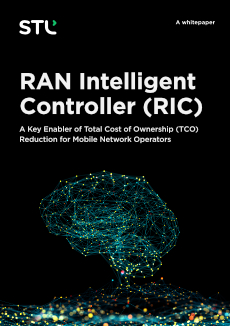Mobile network operators (MNOs) throughout the world are experiencing an exponential growth of data traffic, mainly driven by an increase in the demand for video streaming services, peer to peer services such as video conferencing, OTT applications, as well as by tremendous proliferation of mobile devices. A recent report from Analysis Mason indicates that between 2021 and 2025 alone, mobile traffic will grow a further 250%. Conventionally, operators tackle the traffic growth and maintain the desired quality of service by acquiring more spectrum, adding carriers or by cell splitting. Since the new spectrum that is being awarded to MNOs are typically at higher frequency bands, their propagation characteristics often require more sites than usual to cover a given geographical area.
Furthermore, it is important to note that the revenue growth from mobile services is not commensurate with the traffic growth. A recent white paper from CMI Corp/VMWare shows that profit per bit for MNOs has been steadily eroding for the past decade, and the trend continues. This means that there is an unprecedented need for MNOs to keep pushing their TCO (total cost of ownership) down as they look for opportunities for revenue growth.
In this paper, we touch upon the TCO reduction aspects of MNOs and how in the O-RAN architecture, RIC (RAN Intelligent Controller) in particular would be helpful in that context.
These are major components of TCO, at a high level. For OPEX, the cost breakdown greatly depends on the geography, operating practices and environment (including regulatory aspects)-hence making an average percentage breakdown estimate may not make much sense.
When it comes to TCO reduction, we need to consider both CAPEX and OPEX reductions. For subsequent discussions, we will concentrate on the radio access network (RAN) only as it constitutes the majority of the mobile network cost. CAPEX reduction could be achieved by improving the spectral efficiency in general-that is making the best use of the deployed capacity such that the MNO can push the deployment of new capacity and/or the need for new spectrum as farther in time as possible. Self Organizing Network (SON) is a mechanism through which operators have traditionally looked to reduce CAPEX and OPEX by enabling automation to increase operational efficiencies of the network.



